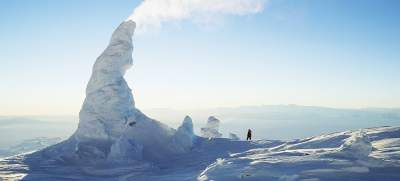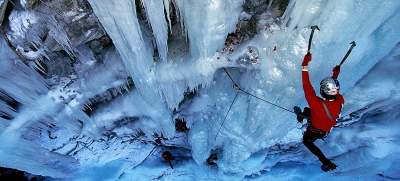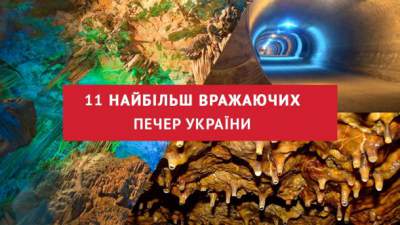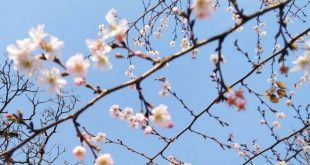 Nature is the greatest and accomplished artists, all their works will give us unprecedented beauty and grandeur.
Nature is the greatest and accomplished artists, all their works will give us unprecedented beauty and grandeur.
For us natural masterpieces, unknowable by nature, are truly a miracle, even more causing us to feel the connection with reality around us. Nature has enough resources for creativity, be it stone, water or ice. These natural icy wonders to see happen not for everyone, as they are located in remote and very cold places of our planet. But virtual to consider this beauty will not be difficult.
Blue river

A real Paradise in Greenland for enthusiastic kayaking. When the melting of Petermann glacier, a region located below filled with crystal clear water with a bluish tint. The phenomenon is seasonal, and each time the river changed its shape. Blue river was discovered by three scientists, who conducted research on the problem of global warming. The river began to attract its splendor a large number of tourists.
Glacial waterfalls in Svalbard

Svalbard, meaning “cold coasts”, is an archipelago in the Arctic constituting the northernmost part of Norway and Europe. This place is located about 650 kilometres North of mainland Europe, midway between mainland Norway and the North pole. Despite being so close to the North pole, Svalbard is comparatively warm due to the heating effect of the Gulf stream, which makes it suitable for habitation. In fact, Svalbard is the northernmost permanently inhabited region on the planet. The island of Spitsbergen covers a total area of 62,050 square km, nearly 60% of which is covered by glaciers, many of which lead straight to the sea. Giant glacier Boswellin located on Nordaustlandet — the second largest island in the archipelago, stretched by as much as 200 kilometers. Twenty meters of the edge of the vast glacier Boswellin, stretching for two hundred miles, crossed numerous waterfalls, to notice that only in the warmer seasons of the year.
The crystal caves

This cave in the glacier — the result of glacial melting, when rain and meltwater on the glacier surface are directed into streams that enter the glacier through the cracks. The flow of water gradually melts the hole, making the path to lower areas, forming long crystal cave. Fine sediments in the water along give the flow of melt water dirty color, while the top of the cave is shown in dark blue. Due to the rapid motion of the glacier of about 1 m per day on an unequal landscape, this ice cave is transformed into its end into a deep vertical crevice. This allows daylight to enter the ice cave from both ends. The cave is accessible through a 7-foot entrance on the shoreline. In the end it tapers to a difficult narrow passage, not more than a meter tall. The ice caves are unstable areas and can be destroyed at any time. They are safe to enter only in winter, when cold temperatures strengthen the ice. Despite this, it is possible to hear the continuous sounds of ice grinding in the cave. This is not because everything is going to collapse, but because the cave is moving along with the glacier itself. Each time the glacier moved a millimeter, you can hear extremely loud sounds. Among the attractions of Iceland caves are very popular
The Briksdal Glacier

Glacier Briksdalsbreen or Briksdal is one of the most accessible and most famous glacier arms of Jostedalsbreen. This place is situated in Norway and is part of the National Park Jostedalsbreen. The glacier ends in a small glacial lake located 346 meters above sea level. Visitors from around the world come to see the beautiful exit glacier Briksdal, picturesquely situated among waterfalls and high peaks. With the proper equipment and experienced guides, visitors can enjoy absolutely safe but incredibly exciting trip.
Canyon Berda

Berda canyon, carved by melt water is 45 meters deep. This photo was taken in 2008. Along the edge of the Ice Canyon of Greenland, the lines on the wall show the stratigraphic layers of ice and snow, established during these years. A black layer at the base of the channel is cryoconite — inflated powdery dust that is deposited and deposited on snow, glaciers or ice sheets.
Arctic Glacier elephant Leg

Arctic Glacier, the Foot of an elephant found in North Greenland. The grey zone at low elevation on the glacier carved meltwater channels, clearly separated from the white surface accumulation zone higher. It is easy to understand from where this glacier there was such a name. This unique glacier is located in a wonderful geographic position on the northeastern coast of Greenland
Frozen wave

This unique frozen wave is located in Antarctica. She was discovered by American scientists Tony Travouillon in 2007. These pictures really do not show a giant wave somehow frozen in the process. The formation contains blue ice, and this is convincing testimony that it was not created instantly from a wave. Blue ice is created by compressing trapped air bubbles. The ice looks blue because, when light passes through the layers, the blue light is reflected back, and the red light is absorbed. Thus, dark blue colour suggests that the ice formed slowly over time, not instantly. Subsequent melting and perezarazhenie for many seasons gave the formation of a smooth, wave-like appearance.
Striped iceberg

Most often icebergs have blue and green stripes, but may be brown. This phenomenon often occurs in the southern Ocean. Striped icebergs with multiple color bands, including yellow, brown, quite common in the cold waters of the Antarctica. Colored icebergs are formed when large pieces of ice detached from the ice shelf and into the sea. Because glaciers are composed of snow falling on Antarctica for many millennia, the ice is composed of fresh water. Thus it appears that the floating fresh ice interacts with salt water. Sea water is in contact with the supercooled glacier also freezes, as if covering it with cork. This upper layer of ice formed from seawater that contains organic matter and minerals. Picked up by the waves and blown by the wind, the icebergs can be dyed an amazing color bands of different forms and structures. Iceberg appears white because of the tiny bubbles trapped in the ice and diffused light. The blue plots are created when the crack in the ice shield is filled with melt water, which quickly freezes. In this case, the bubbles don’t have time to be formed. When the water is rich in algae, the strip can be painted in green and also in a different hue.
Icy tower

Hundreds of ice towers can be seen on the top of the volcano Erebus (3.800 m). They look like a one day stubble on the face of the giant. Constantly active volcano, probably the only place in Antarctica where fire and ice meet, mingle and create something unique. Towers can reach 20 feet tall and look almost alive, releasing jets of steam in the Antarctic sky. Part of the volcanic steam freezes, putting off the inner part of the towers, expanding and extending them.
Frozen waterfall Feng

Fang is a waterfall located near the town of vail in Colorado. A huge pillar of ice formed from this waterfall only during exceptionally cold winters, when frost creates an ice column that grows up to 50 meters in height. Ice Fang has a basis, reaching 8 meters in width.
Penitentes

Penitentes — an amazing ice spikes formed naturally on plains at high-altitude areas of the Andes range, at an altitude of over 4000 meters above sea level. These ice spikes reach variable heights from a few centimeters to 5 meters, making the impression of an ice forest. The tips of their blades will always point to the sun. they slowly begin to form when the ice melts in early sunlight. The people of the Andes have attributed this phenomenon of the fast wind in this area, which is actually only part of the process. Recent scientific observations of the sunlight that falls on the ice, warms it, in addition, part of light trapped in the ice, which leads to unequal melting of the ice and those parts of the ice that do not melt, forming statues of strange shapes, known as Penitentes.








